Best DIY home security systems of 2024
Our team of home security experts put multiple DIY systems through our rigorous hands-on testing process to find the best DIY home security systems of 2024. We ordered and installed dozens of devices, including cameras, sensors, and control panels; used each system in our own homes; and evaluated each company’s customer service and monitoring. We tested SimpliSafe, Cove, Arlo, Ring, and others and named SimpliSafe the top system due to how easy it is to install, customize, and use, along with its low price, solid professional monitoring, and stellar customer service.
Best DIY home security providers
- Installation: DIY
- Monitoring: $17.99–$27.99/mo.
- Equipment: $199+
- Contract: None
Disclaimer: Prices are subject to change. Availability by location may vary.
- Installation: DIY
- Monitoring: $17.99/mo.+
- Equipment: $249+
- Contract: None
Disclaimer: Prices are subject to change. Availability by location may vary.
- Installation: DIY
- Monitoring: $19.99/mo.
- Equipment: $199+
- Contract: None
Details: Prices are subject to change. Availability by location may vary.
- Installation: DIY
- Monitoring: $3.99–$20/mo.
- Equipment: $199.99+
- Contract: None
Disclaimer: Prices are subject to change. Availability by location may vary.
How we chose the top DIY home security providers
There are a lot of DIY home security systems out there, and it may feel overwhelming when making a choice. So we installed them in our own homes and designed a ranking system to help you make the right decision for yours.
- Equipment and customization: We looked at each system's overall quality and smart home compatibility.
- Value: We evaluated each system by its upfront and monthly costs.
- Ease of use: We installed and tested each system to gauge overall simplicity.
- Monitoring: We analyzed each system's professional monitoring offerings and first-response processes.
- Customer service: We contacted each provider to document hold times, troubleshooting, and friendliness.
- Data privacy: We pored over privacy policies, data breach histories, and any potential red flags.
#1: SimpliSafe
- Installation: DIY
- Monitoring: $17.99–$27.99/mo.
- Equipment: $199+
- Contract: None
Disclaimer: Prices are subject to change. Availability by location may vary.
Best overall DIY home security system
- Simple installation
- Excellent value
- Easy customization
- Minor equipment glitches
- Costly interactive monitoring
- Limited customer support channels
We tested SimpliSafe in our home and quickly realized that it stood out amongst its DIY competitors. Simply put, SimpliSafe offers an easy-to-install, low-cost, and highly customizable system.
We were able to get our SimpliSafe system up and running in just two hours. We downloaded the SimpliSafe app, which gave us step-by-step instructions for connecting all of our hardware and setting up monitoring services. Then we installed the base station, wireless keypad, three entry sensors, one motion sensor, and one SimpliCam security camera. When we ran into a minor glitch connecting our SimpliCam, a customer service representative was able to talk us through the setup over the phone.
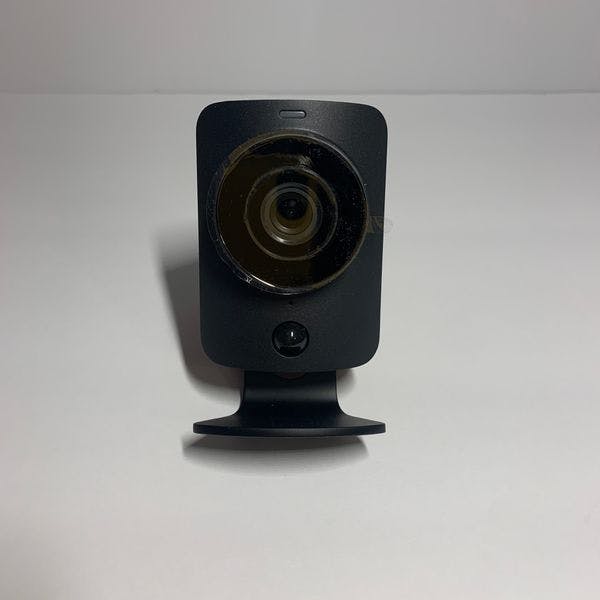
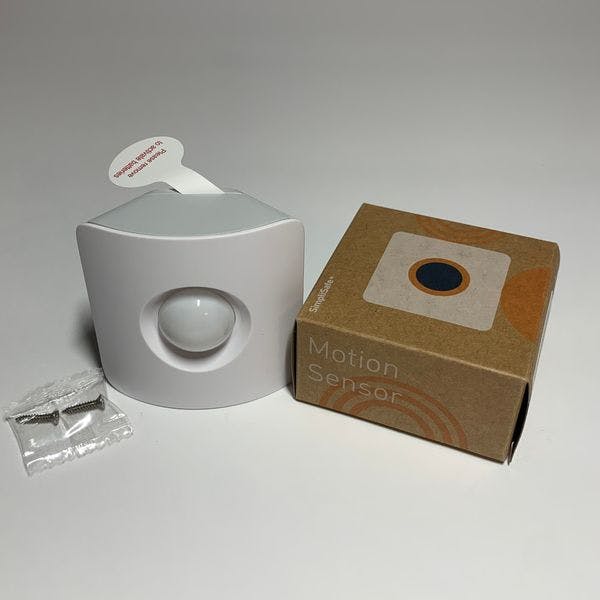
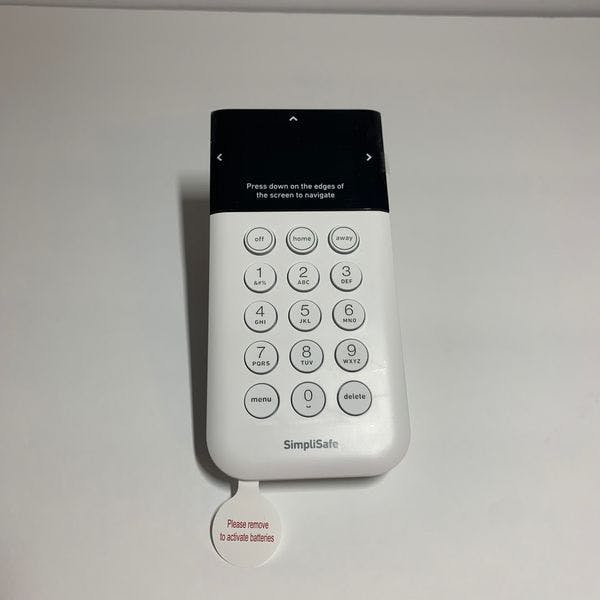
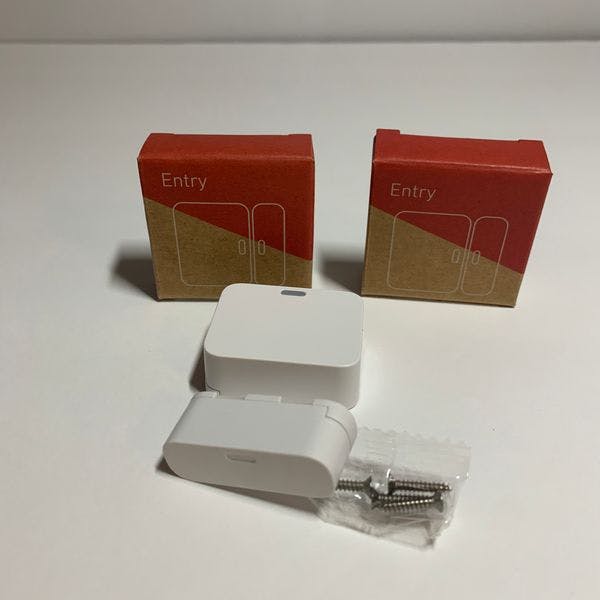
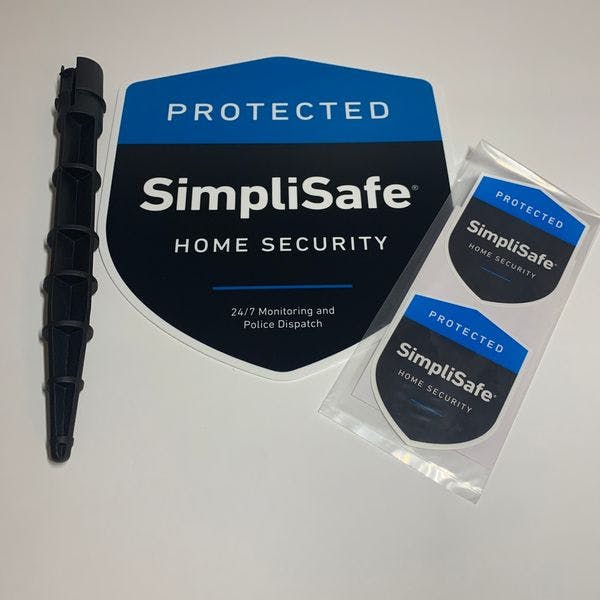
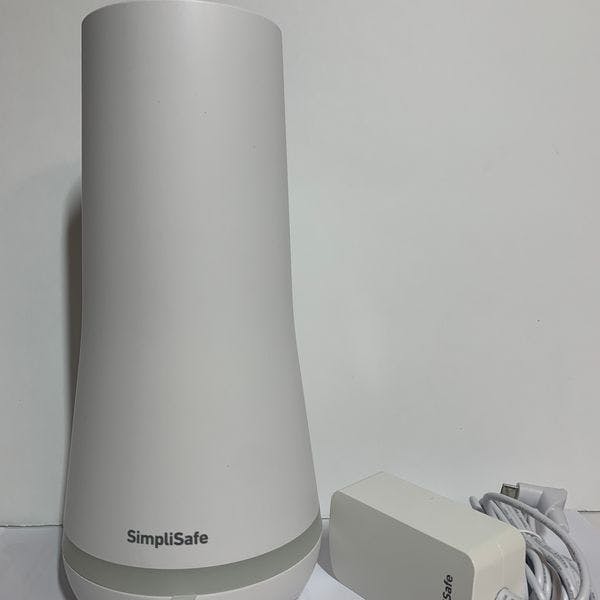
The value of the SimpliSafe home security system is another reason why we rated it as our number one choice. SimpliSafe’s equipment is competitively priced and often slashes its prices by 50–60%. It offers a 60-day money-back guarantee if you’re not completely satisfied—about a month longer than most competitors. SimpliSafe offers three tiers of monitoring, including self-monitoring. And it doesn’t require a contract, so there are no cancelation fees.
A SimpliSafe system is highly customizable and offers more preselected package bundles than any other provider. Among them are The Foundation, a basic kit for small homes or apartments, and The Beacon, its most comprehensive bundle, which includes two wireless outdoor security cameras. You can purchase equipment individually or add it to an existing bundle, so you can create a completely personalized home security system. The SimpliSafe system also integrates with Amazon Alexa, Google Assistant, and Apple Watch.
#2: Cove
- Installation: DIY
- Monitoring: $17.99/mo.+
- Equipment: $249+
- Contract: None
Disclaimer: Prices are subject to change. Availability by location may vary.
Best DIY home security for overall value
- Budget pricing
- Easy installation
- Quality, customizable equipment
- No self-monitoring option
- Limited equipment selection
- Lack of home automation
Cove's starting price is slightly higher than the other brands that made this list, but its high-quality equipment more than makes up for it. For our hands-on testing of the DIY Cove home security system, we spent about an hour installing nine devices, including the control panel, sensors, detectors, and camera. Then we spent one week using the system.
Cove’s pricing is some of the lowest that we encountered—and its high-quality equipment really boosted its value. Items like window and door sensors cost around $15 apiece, and its outdoor camera costs around $200—a steal in the industry. We also liked that Cove offers transparent pricing and allows you to build your own system from the ground up. In addition, Cove has frequent sales that allow you to net further savings.
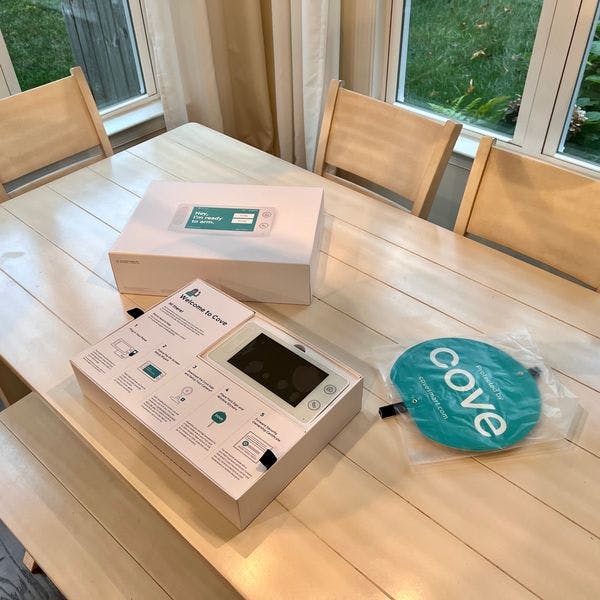
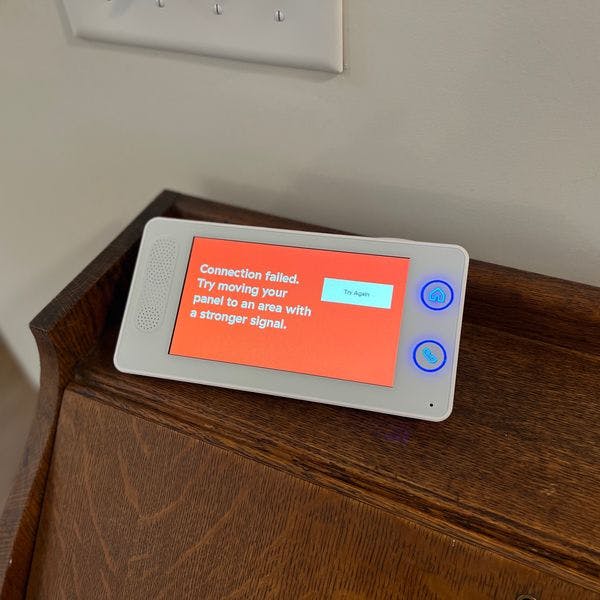
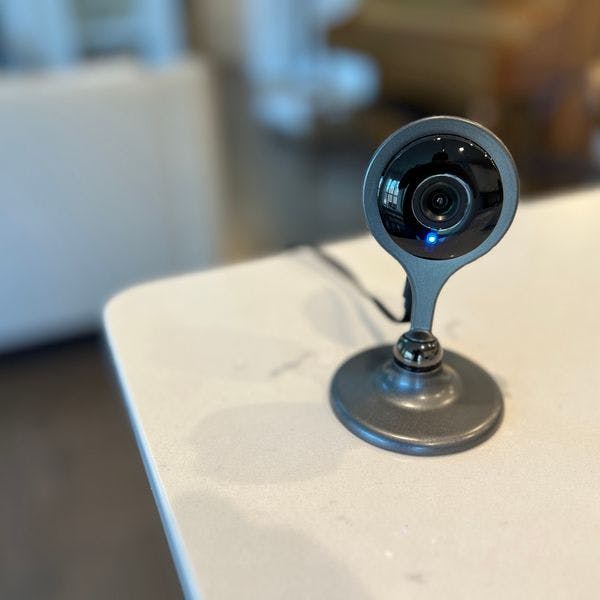
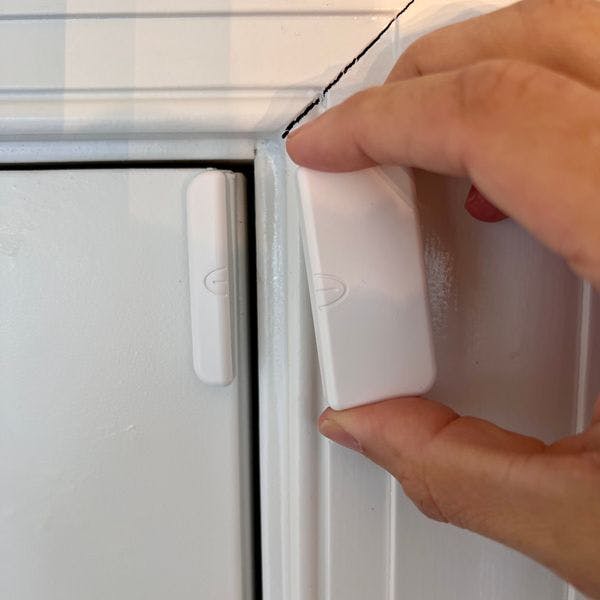
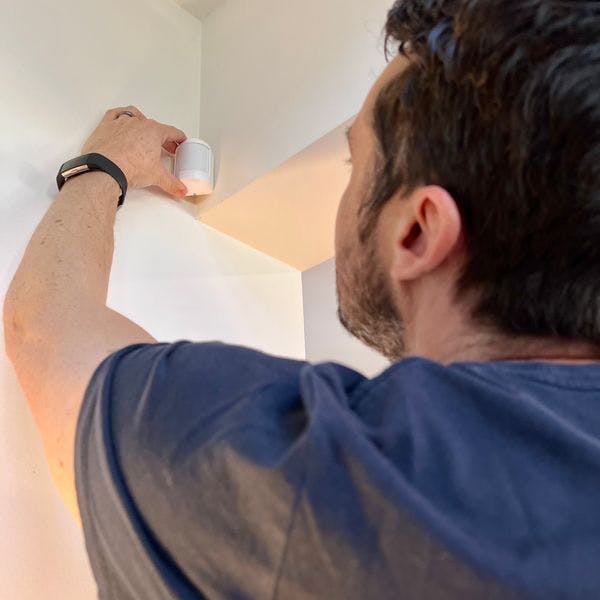
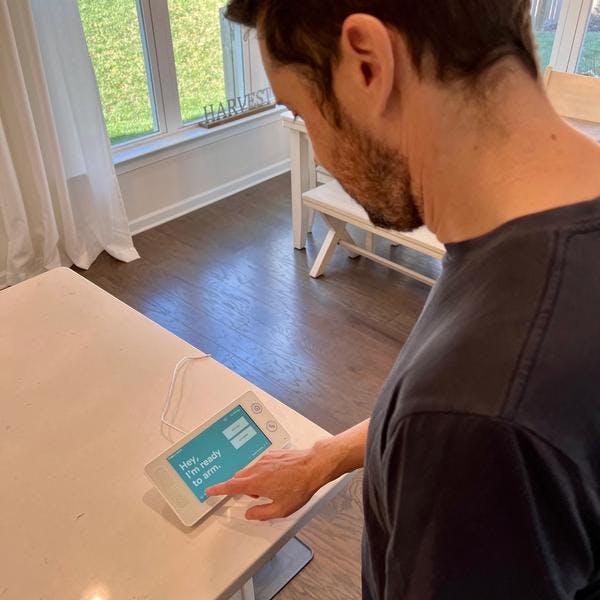
You’ll be able to choose between two professional monitoring plans, both of which sit right in the middle as far as cost is concerned. The Cove Basic monitoring plan costs $17.99 per month, while the more comprehensive Cove Plus is $27.99 per month. You can choose to either pay for your equipment up front, which could cost $200–$500, or pay as you go by bundling the equipment cost into your monthly bill. With the Pay Later or Pay Never plan, you agree to maintain a service plan for 36 months or pay for the equipment for early cancelation. Outside of that plan, Cove doesn’t lock customers into a long-term contract.
With a stable of equipment that’s both budget-friendly and high quality, Cove exceeded our expectations. Cove’s DIY system is an excellent option for value-minded consumers.
#3: Arlo
- Installation: DIY
- Monitoring: $19.99/mo.
- Equipment: $199+
- Contract: None
Details: Prices are subject to change. Availability by location may vary.
Best DIY home security for the minimalist
- Minimalistic design
- Multifunctional sensors
- Three months of free monitoring
- Few customer support options
- Camera feed lag
- Cellular backup accessory not included
Simple and practical. Those are the words that kept coming up in our review of Arlo’s DIY home security system. In fact, we chose Arlo as the best DIY home security system for the minimalist. Arlo’s simple yet capable system secures your home with a small number of devices. Arlo is a practical choice for those who are new to home security or who prefer simplicity in their system.
Arlo offers only two home security packages (although it does offer several bundles on its website): an “essentials” kit with a keypad sensor hub and two all-in-one sensors and a more robust system with five all-in-one sensors and a yard sign. Depending on the size of your home, you can purchase one of these kits and then choose from plenty of additional sensors or accessories. We opted for the essentials kit and added an indoor camera. We installed everything in about two hours.
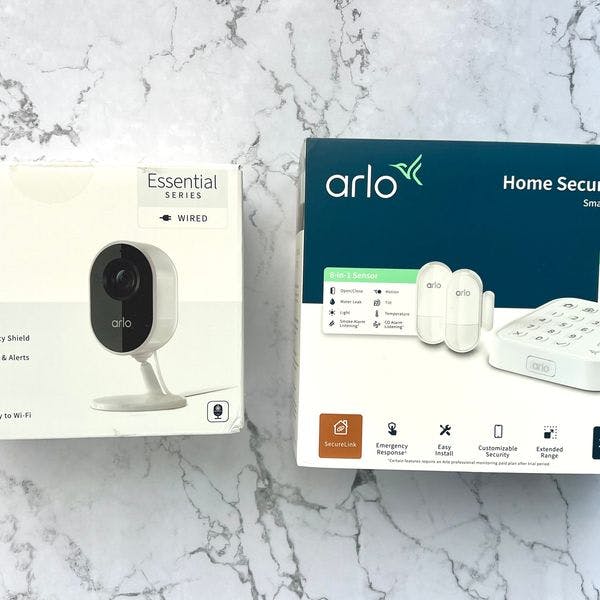
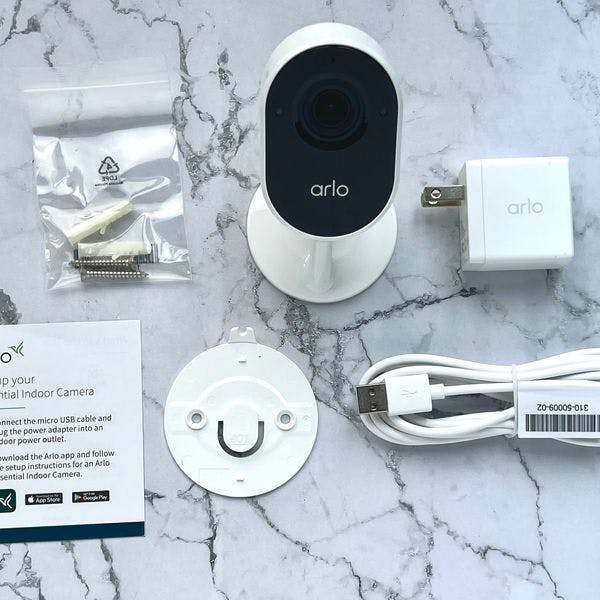
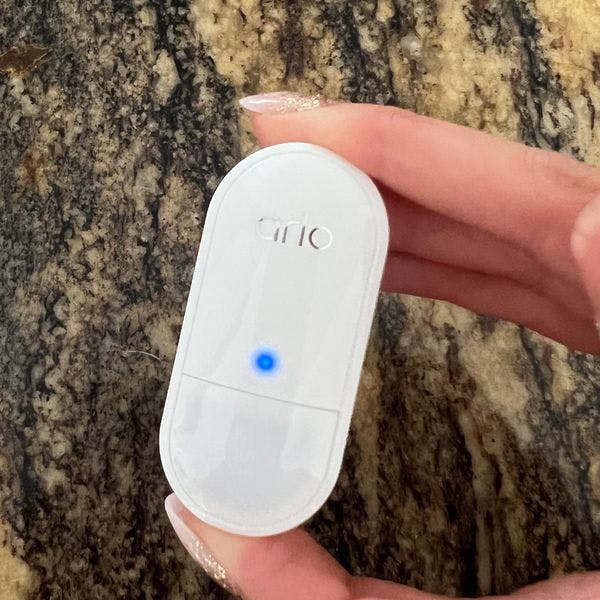
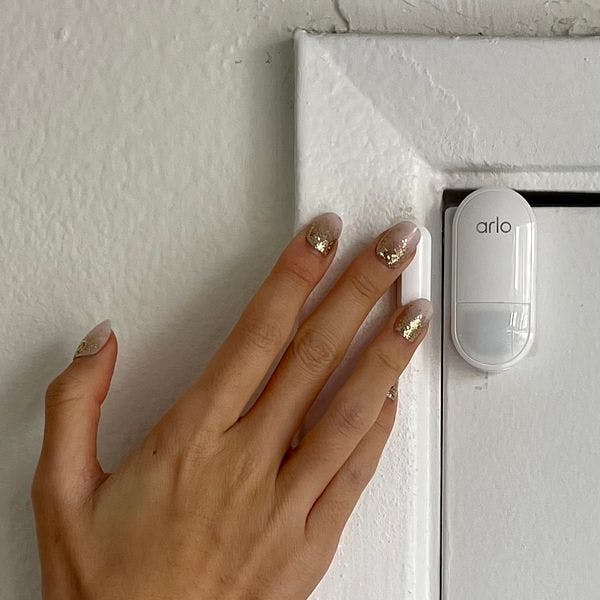
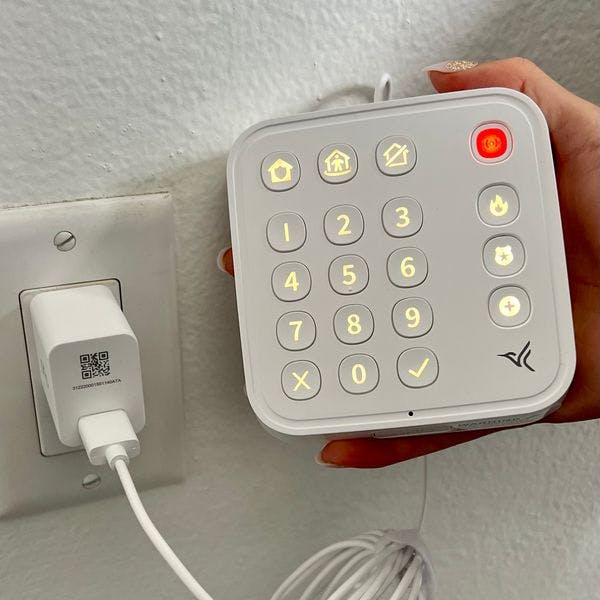
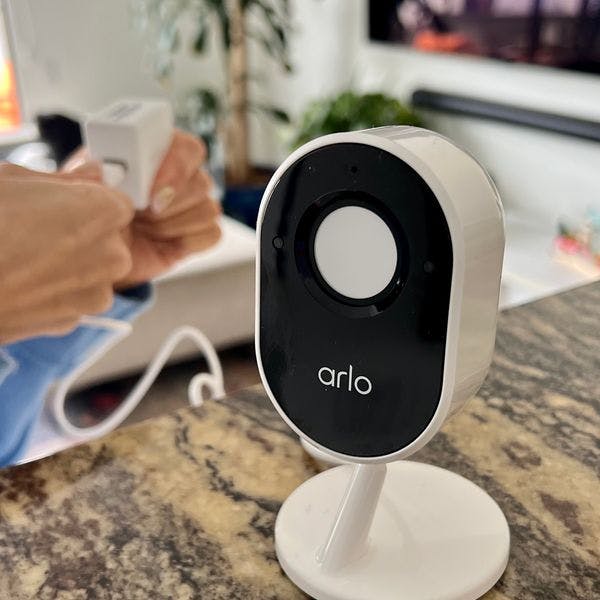
We were pleasantly surprised by several aspects of the Arlo system we tested—especially its multifunctional, all-in-one sensors. These versatile sensors detect opening and closing doors and windows, motion, light, temperature changes, water leaks, garage door tilts, and smoke and CO alarm listening (when professional monitoring is used). We also appreciated that Arlo offers customers a three-month trial for professional monitoring, which is two months longer than the industry standard. For the ultra-minimalist, self-monitoring is still an option.
We had only one major complaint about Arlo’s simple, straightforward security system: cellular and battery backup don’t come standard, so you’ll have to order a modular accessory separately. Having cellular and battery backup is essential in the event of a power or Wi-Fi outage.
#4: Ring
- Installation: DIY
- Monitoring: $3.99–$20/mo.
- Equipment: $199.99+
- Contract: None
Disclaimer: Prices are subject to change. Availability by location may vary.
Best DIY home security for smart home automation
- Smart home automation
- Straightforward setup
- User-friendly mobile app
- Worrisome data privacy policies
- Finicky motion sensors
- Inability to silently arm/disarm
One of our favorite aspects of the Ring DIY home security system is how compatible it is with smart home devices. It pairs easily with smart home stalwarts Amazon Alexa and Google Home, but it also integrates with Chamberlain smart garage controls, Schlage and Yale smart locks, Honeywell thermostats, and a lot more. If this is an essential part of your home security needs, Ring may be your best option.
During our testing, we installed Ring’s eight-piece kit and added an indoor camera. Setting up the system was a breeze and only took about 30 minutes. The mobile app was intuitive and extremely user-friendly. Using the mobile app to self-monitor, our testers were impressed with the crisp picture from the indoor camera with little to no time lag. Self-monitoring is free, and professional monitoring starts at $20 per month. Ring offers three tiers of monitoring: Basic, Plus, and Pro. Ring doesn’t require a lengthy contract, so users can opt for month-to-month monitoring with no cancellation fee.
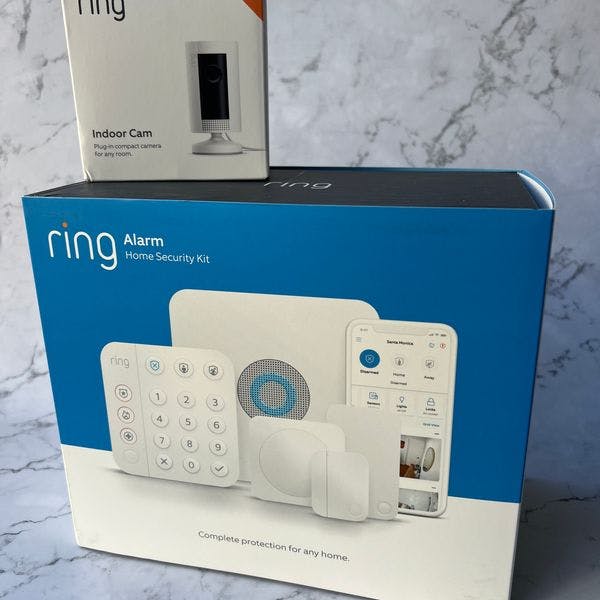
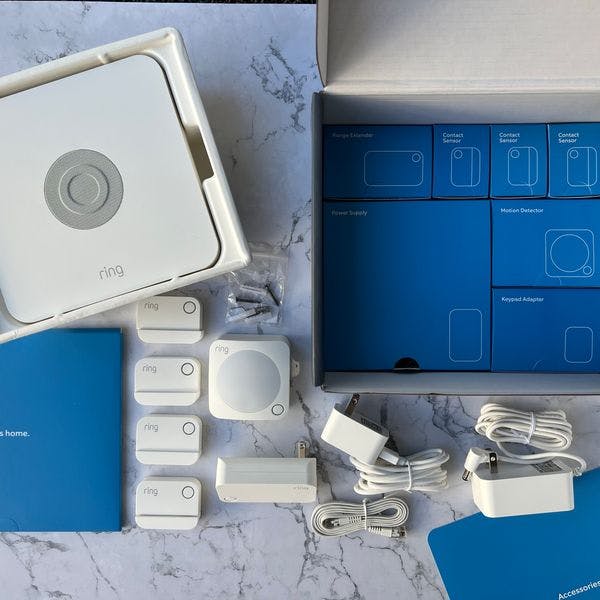
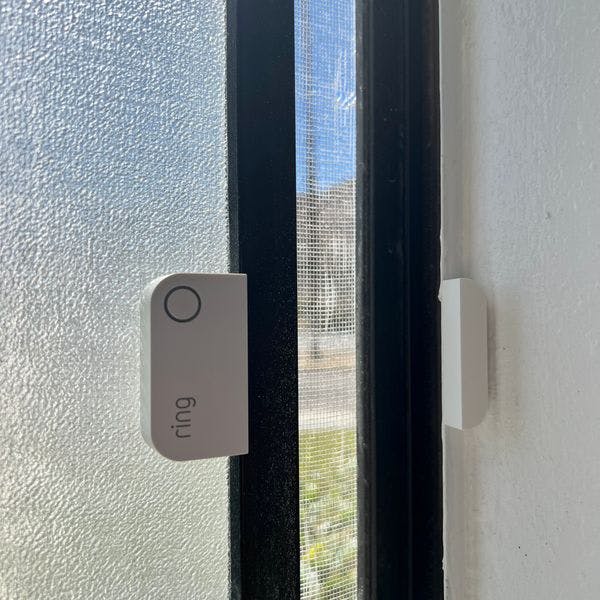
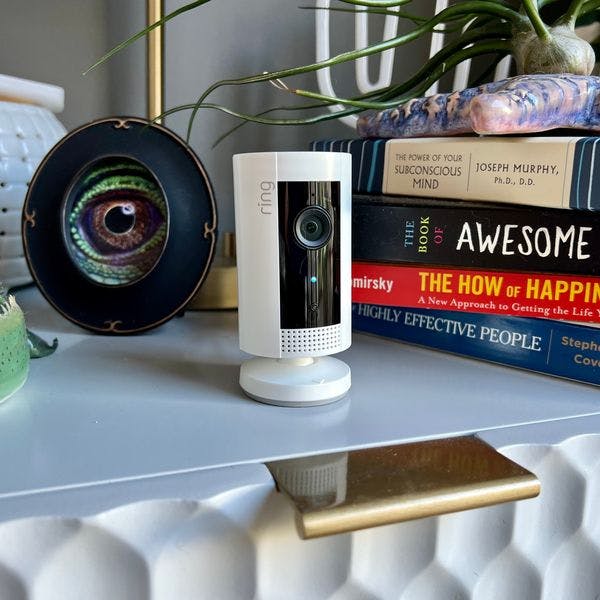
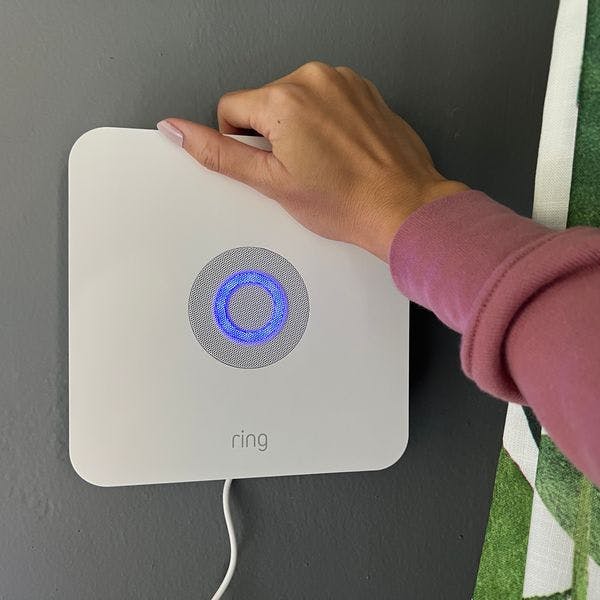
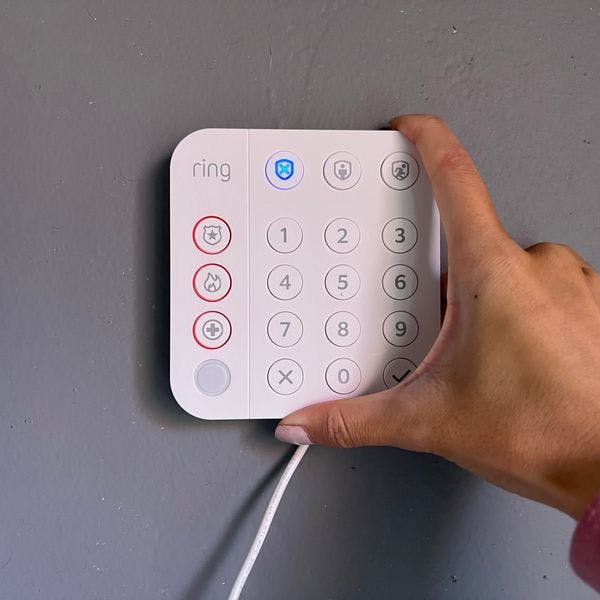
Our biggest issue with Ring surrounds its data privacy policy. Ring, which is owned by Amazon, has been plagued by controversial business practices, including selling doorbell camera footage without customer permission. (1) It has also been notably silent around its use of facial recognition software.
We also found two areas where Ring could improve. While we loved Ring’s smart home compatibility, we were disappointed that silent arming and disarming isn’t an option. Many consumers prefer to be able to silently arm or disarm their system to avoid waking up loved ones. Another minor complaint we had is that the process to cancel service took almost 45 minutes over the phone. Despite our reservations about Ring’s data privacy practices, it’s a quality and reliable system that will serve your home security needs—particularly if you’re looking for smart home compatibility.
What to consider when choosing a DIY home security system
Generally speaking, consumers opt for a DIY home security system in lieu of a professionally installed one because it’s more affordable and highly customizable, and they’re tech-savvy enough to install and set it up themselves. Our expert home security reviewers considered multiple factors as we recommended the best DIY providers out there.
When we rated DIY home security systems, we looked at value, including upfront and monthly costs; equipment, including its quality and smart-home customization; how easy it is to install and use; how robust and timely the professional monitoring is; the quality of customer service; and any potential data privacy concerns.
We accomplished this through rigorous hands-on testing of several DIY home security providers. We installed each system in our own homes and documented how easy it was to follow step-by-step installation tutorials, along with any issues and errors. We also connected our smart home devices, established custom rules, and tested other functions to gauge how easy the system is to use. Finally, we contacted customer support to troubleshoot and ask questions. Those hands-on findings allowed us to run each brand through an objective rating system to evaluate it in the most accurate way possible.
Is a DIY home security system right for you?
Before purchasing any home security system, it’s important to consider a few factors. First, analyze the overall cost of the system—including upfront and long-term costs, professional monitoring fees, contracts, and cancellation fees. Then research the system’s ease of self-installation, day-to-day use, and whether the system will integrate with your smart home devices.
While some people still prefer professionally installed home security systems from well-known brands like Vivint and ADT, many homeowners and renters today are choosing the DIY route. Professionally installed home security systems are typically more expensive, may require you to drill holes and hard-wire your equipment, and often come with long-term contracts. While the equipment is usually of high quality and comes with a proven track record, many consumers prefer a lower cost, less permanent, more flexible DIY system.
DIY systems are typically affordable, user-friendly, plug-and-play systems with ample options for customization. You can elect to pay for professional monitoring or self-monitor in most cases.
What you need to know before buying a DIY home security system
Before you purchase a DIY home security system, there are a few things you need to know.
First, installation is not as difficult as you might think. With just a little know-how, almost anyone can install a DIY home security system. Once you download the mobile app, it will usually provide clear, easy, step-by-step instructions.
Second, even though DIY systems are less expensive than professional systems, they can still cost hundreds of dollars. Be clear on your budget and read all the terms and conditions for any brand you’re considering. Don’t forget to factor in the cost of professional monitoring (unless you plan on going the self-monitoring route).
Finally, when shopping for a system, make sure you select a system that offers all of the components for your specific security needs. Worried about package thieves? Make sure your system includes or integrates with a doorbell camera. Concerned about smoke, CO poisoning, or water leaks? Choose a system with professional monitoring and environmental sensors.
How to save money on home security
You can save money on home security in several ways.
One way is to customize your system to fit your space and prioritize only the essential security items. For example, if you have door and window sensors, consider whether you also need motion detectors. Place security cameras in a position to cover as many rooms as possible. Typically, only ground-floor windows need sensors because burglars use those for easy access.
Another way to save money on home security is to watch for discounts and deals. Companies may offer a discounted package of 50% to 60% off, throw in a free camera, or give you three months of free professional monitoring. Some companies also sell certified refurbished components at a large discount.
Finally, you can save money on home security by self-monitoring or choosing a lower tier of professional monitoring. Many DIY systems can be self-monitored through smartphone apps, while some companies offer low-cost professional monitoring for as low as $20 per month.
How to self-monitor your home security system
With a little effort, self-monitoring can be a safe, easy, low-cost alternative to professional monitoring. If you choose to self-monitor your home security system, keep these tips in mind.
First, use extra care when installing your security cameras and window and door sensors. Make sure your indoor camera has a clear view of outside doors and that every exterior door and all accessible lower-level windows are protected by sensors.
Second, ensure that you have a reliable and steady connection to the internet with enough bandwidth to support the addition of a security system.
Third, consider investing in cloud storage for your security cameras. Cloud storage can cost from $2 to $12 per month and protects your camera’s footage.
Finally, perform regular tests and maintenance. Check the batteries and connections for your security devices once per month. Check your mobile app to see that all devices are working properly. Set off a test alarm to check how quickly your system alerts you of a breach.
A final note
After putting these systems to the test in our own homes, we are confident that you will be happy with any one of our top picks for the best DIY home security systems of 2024.
#1 SimpliSafe—Best overall
#2 Cove—Best on a budget
#3 Arlo—Best for the minimalist
#4 Ring—Best for smart home integration
Donna Pittman is a freelance writer with a passion for educating consumers about new products, especially in tech. She has been a writer for over 15 years and holds a bachelor’s degree in English. She has written for a variety of industries, including home security, commercial security, and solar energy. When she’s not researching or writing an article, she is probably bargain-hunting or hiking.
Eric Paulsen is a writer, editor, and strategist who has been creating content in the B2B, healthcare, FinTech, home security, and government sectors for more than five years. He holds an MFA in creative writing and lets everyone in his life hang that over his head. When he doesn’t have his hands deep in some piece of content, he’s either watching baseball or praying for the offseason to end quickly.
Vilja Johnson leads Switchful's editorial and creative teams. She has been editing content in the consumer tech space since 2016, and she has over a decade of experience teaching writing and editing. She's passionate about creating content that resonates with people and helps them solve real, day-to-day problems. In her free time, Vilja serves on the board of directors for the PrisonEd Foundation, where she runs a writing program for inmates in Utah prisons and jails.
Endnotes and sources
1. “Ring the Alarm: 87% of Americans Don’t Know How Their Doorbell Camera Data Is Being Used,” The Zebra. Retrieved February 16, 2023.



